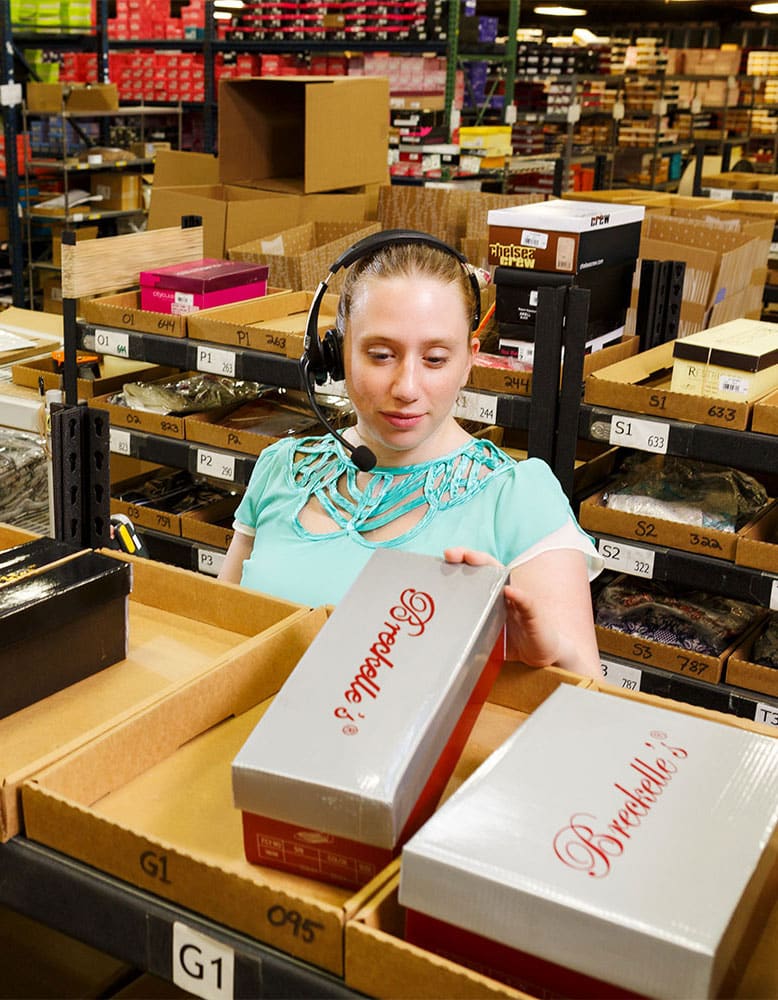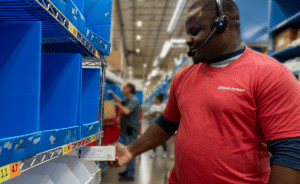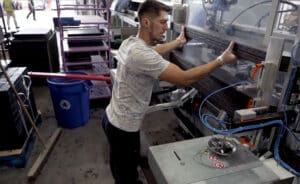Apparel retailers optimize DC operations, and improve worker retention with voice technology
The apparel market in the United States is predicted to top $344 Billion in revenue in 2023 and is expected to grow annually by 1.96% (CAGR 2023-2027). (Statista) The market’s largest segment is women’s apparel with a volume of $180 Billion in 2023.
The most-pressing challenges of this segment revolve around improving order-to-delivery times to meet new customer expectations driven by the e-commerce boom, reducing fulfillment costs in the face of unrelenting price competition, managing returns more efficiently to minimize losses and, onboarding seasonal staff without increasing fulfillment errors.
In any of these processes, technology plays a very important role. From the front end – customer engagement and experience through e-commerce, to the delivery and returns process – everything must be flexible, modular and scalable. Having visibility throughout the supply chain is critical and that’s why technology investment in the apparel industry is expected to continue on a steep growth trajectory.
For more than 25 years, Lucas Systems has helped numerous companies in the apparel industry transform DC operations, improve accuracy, throughput, productivity, and service. No matter where apparel retailers are in maturity level or scale, there are solutions utilizing voice-directed mobile applications that can be a vital part of their automation strategy, and can help them increase productivity and optimize processes, in many cases seeing results within 90 days. This article highlights two of those cases.

Reaching new levels of productivity through voice-directed AI
A multi-channel retailer and North America’s leader in women’s apparel and lingerie with more than $1.75 Billion in revenue, built a new fulfillment center of more than 650,000 sq. feet to support their direct-to-consumer channel. The new facility included advanced automation (conveyors and sorters both for inbound and outbound) and a new warehouse management system (WMS).
Shortly after opening the new facility, operations managers began assessing new technologies to achieve additional improvements in picking efficiency and accuracy. Although their new WMS could support voice picking, the voice add-on offered by their WMS vendor did not support their advanced process needs. They turned to Lucas Systems for a full function warehouse optimization solution that supported configurable user workflows, in addition to assignment management and real-time reporting tools that supplemented the WMS.
The unique AI-based optimization solution they implemented from Lucas, embodied in Jennifer™, the brains, voice and orchestration engine of the solution, included multi-modal voice-directed applications and a management console. Its unique optimization features included:

100% picking gains, scaling up, and improving employee engagement
The backstory for many apparel retailers is how their distribution operations have to scale to keep pace with tremendous sales growth and/or seasonal surges. One key element of these stories is how voice applications can reduce employee training time, and increase employee retention.
For one Lucas customer that meant less turnover, less training time and a doubling of pick rates. This customer didn’t invest in voice primarily to address HR issues. They chose Jennifer multi-modal voice applications because Jennifer could adapt to evolving DC processes and help boost productivity in picking and pre-pack sorting. In the end, Jennifer was an integral part of redesigning their picking process to drive a 100 percent increase in picking rates, and to improve the sorting process to eliminate errors and keep pace with picking. But their V.P. of Service said the training and employee retention benefits of Jennifer were “a really big deal for us.” There was less training time, new workers met standard in days (versus a month or more before Jennifer), and turnover declined.
This is not a unique story. Workers using voice are more productive and accurate from day one, addressing another fear-inducing element of temporary labor during peak seasons: increased errors and customer service problems during the most critical time of the year. Taken together, the cost savings and quality advantages underscore why apparel DC operations executives value the tremendous benefits of Lucas voice and warehouse optimization solutions.





